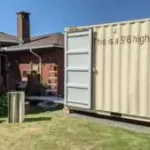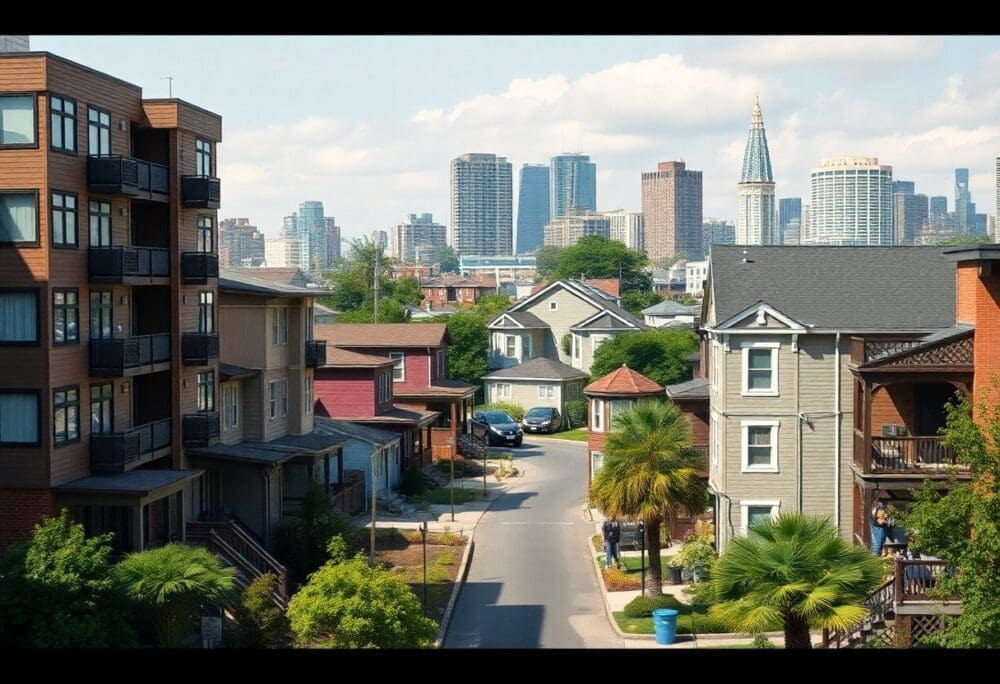Estimated reading time: 20 minutes
Table of contents
As you consider purchasing a home, you’re likely weighing factors like affordability, safety, and quality of life. Your goal is to find a neighborhood that balances these elements with a reasonable price tag. You want to make an informed decision, and that’s where this guide comes in. You’ll discover the best neighborhoods in major cities that offer exceptional housing value, helping you make the most of your investment and find your ideal home.

Key Takeaways:
To determine which neighborhoods in major cities offer the best housing value, consider the following points:
- The affordability of a neighborhood is a key factor, taking into account the cost of living, median home prices, and rental rates compared to the national average.
- Neighborhoods with high appreciation rates and low crime rates tend to offer better long-term value, as they are more likely to attract homebuyers and investors.
- The quality of life in a neighborhood, including access to public transportation, schools, parks, and local amenities, can significantly impact its housing value and make it more desirable to residents.

Evaluating Neighborhoods
Before you start searching for the best neighborhoods in major cities, it’s important to consider what makes a neighborhood valuable to you. You likely have a list of priorities, such as affordability, safety, and access to amenities. As you evaluate different neighborhoods, you’ll want to weigh these factors against your personal preferences and needs. Your goal is to find a neighborhood that offers the best balance of quality and affordability, and that fits your lifestyle.
As you consider your options, you’ll need to think about what you’re looking for in a neighborhood. You may want to prioritize proximity to your workplace, public transportation, or local schools. You may also want to consider the overall atmosphere of the neighborhood, including the local culture, nightlife, and community events. By taking the time to think about your priorities, you can narrow down your search and find the neighborhoods that best fit your needs.
Proximity to Amenities
About the time you start evaluating neighborhoods, you’ll want to think about the amenities that are available in each area. You may be looking for neighborhoods with plenty of restaurants, shops, and entertainment options, or you may prioritize access to parks, gyms, and other recreational facilities. As you consider the amenities in each neighborhood, you’ll want to think about how they fit into your lifestyle and whether they align with your priorities. You may also want to consider the proximity of amenities to your potential home, as well as the overall walkability and bikeability of the neighborhood.
Approximately 80% of homebuyers consider proximity to amenities when evaluating neighborhoods, and for good reason. Having access to the amenities you need and want can greatly enhance your quality of life, and can even impact the resale value of your home. As you weigh the pros and cons of different neighborhoods, you’ll want to consider the types of amenities that are available, as well as their proximity to your potential home. You may also want to think about the potential for future development, and whether the neighborhood is likely to see new amenities and services in the coming years.
Community Engagement
On the whole, community engagement is an important aspect of any neighborhood, and can greatly impact your overall satisfaction with the area. You may want to consider the types of community events and activities that are available, as well as the overall sense of community and camaraderie among residents. As you evaluate different neighborhoods, you’ll want to think about whether they offer the kind of community engagement that you’re looking for, and whether you feel like you would be a good fit.
On top of that, you’ll want to consider the ways in which community engagement can impact your daily life. You may want to think about the types of interactions you’ll have with your neighbors, as well as the overall atmosphere of the neighborhood. You may also want to consider the types of community resources that are available, such as community centers, parks, and other public spaces.
A key aspect of community engagement is the opportunity to get involved and make a positive impact on the neighborhood. As you consider different neighborhoods, you’ll want to think about the types of volunteer opportunities that are available, as well as the overall sense of social responsibility among residents. By getting involved in your community, you can help build a stronger, more cohesive neighborhood, and can also enhance your own sense of belonging and connection to the area. You may also want to consider the potential for community-led initiatives and projects, and whether the neighborhood has a history of coming together to achieve common goals.
Urban Landscapes
Assuming you’re looking for a neighborhood that offers the perfect blend of natural beauty, architectural charm, and affordability, you’ll want to consider the urban landscapes of various cities. You can find inspiration for your search by exploring online forums, such as Cities/Suburbs with the prettiest, affordable homes, where you can discover hidden gems and get a sense of what to expect from different neighborhoods. As you probe into your research, you’ll begin to appreciate the unique characteristics of each urban landscape and how they contribute to the overall quality of life.
You’ll find that the most desirable neighborhoods often boast a mix of green spaces, parks, and diverse architectural styles, which can greatly impact your perception of the area. When evaluating the urban landscape of a neighborhood, consider the proximity to parks, gardens, and other green areas, as these can significantly enhance your living experience. By weighing these factors, you can make an informed decision about which neighborhood offers the best housing value for your needs and preferences.
Green Spaces and Parks
Gently weaving through the urban landscape, green spaces and parks provide a serene escape from the hustle and bustle of city life, allowing you to unwind and recharge. As you explore different neighborhoods, you’ll notice that some areas have an abundance of parks, gardens, and green roofs, while others may have limited access to these amenities. You should consider the importance of green spaces in your decision-making process, as they can greatly impact your quality of life and overall satisfaction with your living situation.
Generally, neighborhoods with ample green spaces tend to have a more relaxed atmosphere, with residents often gathering in parks and gardens to socialize and enjoy the surroundings. You may find that these areas have a stronger sense of community, with residents who are more invested in their neighborhood and its upkeep. By prioritizing green spaces in your search, you can find a neighborhood that offers a unique blend of natural beauty and urban convenience.
Architectural Diversity
Beside the beauty of green spaces, architectural diversity is another key aspect of urban landscapes that can significantly impact your perception of a neighborhood. You’ll find that areas with a mix of old and new buildings, different styles, and imaginative designs can be incredibly captivating, offering a unique charm that sets them apart from other neighborhoods. As you explore these areas, you’ll notice that the architectural diversity can greatly influence the local culture and vibe, with each building contributing to the rich tapestry of the community.
And as you probe deeper into the world of architectural diversity, you’ll discover that it’s not just about aesthetics; it’s also about the character and personality of a neighborhood. You’ll find that areas with a strong sense of architectural identity tend to be more vibrant and dynamic, with residents who are passionate about preserving the unique charm of their community. By embracing this diversity, you can find a neighborhood that truly reflects your personality and provides a sense of belonging, making your house feel like a home.

Economic Factors
Many factors contribute to the overall housing value in a neighborhood, and as you consider your options, you’ll want to take a closer look at the economic factors at play. When evaluating the best neighborhoods for housing value, you’ll want to consider the local economy, job market, and cost of living. Some key economic factors to consider include:
- Housing affordability
- Local economic growth
- Job market stability
- Access to amenities and services
As you weigh these factors, you’ll be able to make a more informed decision about which neighborhood offers the best housing value for your needs and budget. Perceiving the local economic conditions will help you make a wise investment decision.
Housing Affordability
On the surface, housing affordability may seem like a straightforward factor to consider, but as you investigate deeper, you’ll find that it’s influenced by a complex array of variables. You’ll want to consider not only the purchase price or rental cost of a property but also the ongoing expenses, such as property taxes, insurance, and maintenance costs. As you evaluate the affordability of a neighborhood, you’ll want to consider your own financial situation and determine whether the costs of living in a particular area fit within your budget.
On further examination, you’ll find that housing affordability can vary significantly from one neighborhood to another, even within the same city. You’ll want to consider the overall cost of living in an area, including the cost of food, transportation, and other necessities, to get a sense of whether a particular neighborhood offers good value for your money. By carefully evaluating the housing affordability of a neighborhood, you’ll be able to make a more informed decision about whether it’s the right fit for you.
Local Economic Growth
Economically speaking, local economic growth is a key factor to consider when evaluating the housing value of a neighborhood. You’ll want to look at the overall health of the local economy, including the job market, industry trends, and population growth. As you consider the local economic growth of a neighborhood, you’ll want to think about how it may impact the value of your property over time. A strong, growing economy can drive up property values, making a neighborhood a more desirable place to live and invest.
Economically vibrant neighborhoods tend to attract new businesses, amenities, and services, which can enhance the quality of life for residents and increase property values. You’ll want to consider the types of industries and businesses that are present in a neighborhood, as well as any new developments or initiatives that may be on the horizon. By understanding the local economic growth of a neighborhood, you’ll be better equipped to make a smart investment decision.
Plus, a neighborhood with a strong and diverse economy is more likely to weather economic downturns and bounced back quickly, making it a more stable and secure investment for you. As you consider the local economic growth of a neighborhood, you’ll want to think about the potential for long-term appreciation in property values and the potential for rental income, if you plan to invest in a rental property. By taking a close look at the local economic growth of a neighborhood, you’ll be able to make a more informed decision about which neighborhood offers the best housing value for your needs and goals.

Quality of Life
Not every neighborhood in a major city offers the same quality of life, and as you search for the best housing value, you’ll want to consider factors that impact your daily life. When evaluating neighborhoods, you can turn to resources like 2024 Best Cities to Buy a House in America to get a sense of which areas offer the best balance of affordability, amenities, and overall quality of life. As you weigh your options, consider what matters most to you: is it proximity to work, access to good schools, or a vibrant community with plenty of recreational opportunities?
As you consider your priorities, you’ll likely find that different neighborhoods excel in different areas. You may find that one neighborhood offers excellent schools, while another has a thriving arts and cultural scene. By thinking carefully about what you want from your neighborhood, you can make a more informed decision about which area is the best fit for you. Whether you’re looking for a bustling urban environment or a quieter suburban community, there’s a neighborhood out there that can offer you the quality of life you’re looking for.
Safety and Security
Among the many factors that influence your quality of life, safety and security are likely to be near the top of your list. You want to feel confident that your neighborhood is a safe and secure place to live, with low crime rates and a strong sense of community. As you evaluate different neighborhoods, look for those with low crime rates, active community watch programs, and a visible police presence. You can also talk to locals, read online forums, and check crime statistics to get a sense of how safe a neighborhood is.
Among the neighborhoods that offer the best housing value, you’ll often find that safety and security are a top priority. These neighborhoods may have implemented initiatives such as neighborhood watch programs, increased lighting, and community events to foster a sense of community and prevent crime. By choosing a neighborhood that prioritizes safety and security, you can enjoy greater peace of mind and a higher quality of life.
Access to Education
At the heart of any thriving community is access to quality education, and as you consider different neighborhoods, you’ll want to think about the schools in the area. You’ll want to look for neighborhoods with highly-rated schools, a range of educational options, and a strong sense of support for local students. Whether you’re a parent or not, the quality of local schools can have a big impact on the overall quality of life in a neighborhood.
At the same time, access to education is about more than just schools – it’s also about the availability of libraries, community centers, and other educational resources. You may want to look for neighborhoods with a range of cultural and educational attractions, such as museums, theaters, and workshops. By choosing a neighborhood with a strong focus on education, you can enjoy a more enriching and fulfilling quality of life.
But as you evaluate access to education in different neighborhoods, you’ll also want to think about the broader implications for your quality of life. For example, neighborhoods with highly-rated schools tend to have higher property values, lower crime rates, and a stronger sense of community. By prioritizing access to education, you can enjoy a range of benefits that extend far beyond the classroom, from a more vibrant community to a more stable and secure investment in your home.
Cultural and Recreational Opportunities
Now, as you consider which neighborhoods offer the best housing value, you should also think about the cultural and recreational opportunities available to you. When evaluating a neighborhood, you want to consider not only the cost of living but also the quality of life. A neighborhood with a rich cultural scene and plenty of recreational activities can greatly enhance your overall living experience. You will want to think about what kinds of activities and amenities are important to you, such as museums, parks, or community centers.
As you explore different neighborhoods, you will find that some offer a unique blend of cultural and recreational opportunities. For example, a neighborhood with a thriving arts scene may have numerous galleries and performance venues, while a neighborhood with plenty of outdoor spaces may have hiking trails, parks, or waterfront areas. You should consider what types of activities you enjoy and look for neighborhoods that offer those opportunities. By doing so, you can find a neighborhood that not only fits your budget but also provides a high quality of life.
Local Art Scene
Adeptly, you will find that many neighborhoods offer a vibrant local art scene, with numerous galleries, studios, and street art installations. As you explore these neighborhoods, you can discover unique and innovative works by local artists, and even meet the artists themselves. You may find that a neighborhood with a thriving art scene is a great place to call home, as it can provide endless inspiration and creative stimulation. Additionally, a strong local art scene can also be a sign of a neighborhood’s vitality and commitment to community development.
Around every corner, you may find that a neighborhood’s local art scene is reflected in its architecture, public spaces, and community events. You can see how the art scene contributes to the neighborhood’s character and charm, making it a more desirable place to live. By embracing the local art scene, you can become a part of a vibrant and dynamic community that values creativity and self-expression.
Community Events
Towards the goal of building a strong sense of community, many neighborhoods host a wide range of events and activities throughout the year. You can attend festivals, parades, and street fairs, which can be a great way to meet your neighbors and get involved in local initiatives. To get a feel for a neighborhood’s community spirit, you can attend one of these events and see firsthand how the community comes together to celebrate and support one another.
Through your participation in community events, you can develop a deeper connection to your neighborhood and its residents. You may find that a neighborhood with a strong sense of community is a great place to put down roots, as it can provide a supportive and welcoming environment. By getting involved in local events and activities, you can help build a stronger, more cohesive community that benefits everyone.
Further, as you participate in community events, you will likely discover that they play a significant role in fostering a sense of belonging and connection among residents. You can see how these events bring people together, promote social cohesion, and provide opportunities for community engagement. By supporting and participating in community events, you can help create a more vibrant and inclusive community that values diversity and promotes social interaction.
Environmental Considerations
To make an informed decision when choosing a neighborhood, you should consider the environmental factors that can impact your quality of life and the value of your housing investment. As you weigh your options, you’ll want to think about the long-term effects of your decision on both your health and the environment. You’ll likely want to prioritize neighborhoods with strong environmental track records, as these areas tend to be more desirable and maintain their value over time. By taking the time to investigate environmental considerations, you can make a more informed decision that aligns with your values and priorities.
As you research deeper into your research, you’ll find that some neighborhoods offer more environmentally friendly options than others. You may want to look for areas with plenty of green spaces, such as parks and gardens, which can help mitigate the urban heat island effect and provide a peaceful escape from the hustle and bustle of city life. You should also consider the proximity of your potential neighborhood to public transportation, as this can significantly reduce your reliance on personal vehicles and lower your carbon footprint. By considering these factors, you can find a neighborhood that not only meets your needs but also supports your commitment to environmental responsibility.
Sustainability Initiatives
After researching various neighborhoods, you’ll likely notice that some areas have implemented more sustainability initiatives than others. You may find that certain neighborhoods have invested in renewable energy sources, such as solar or wind power, or have implemented recycling programs and composting initiatives. As you explore these neighborhoods, you’ll want to consider how these initiatives align with your own values and priorities. You may also want to look into whether the local government has implemented any policies or incentives to support sustainable living, such as tax credits for energy-efficient upgrades or rebates for eco-friendly appliances.
After evaluating the sustainability initiatives in various neighborhoods, you can get a sense of which areas are truly committed to reducing their environmental impact. You may find that some neighborhoods have formed community groups or cooperatives to support sustainable living, such as community gardens or car-sharing programs. By looking into these initiatives, you can gain a better understanding of the community’s values and whether they align with your own. As you consider your options, you’ll want to think about how you can contribute to and benefit from these sustainability initiatives, and how they might impact your quality of life and the value of your housing investment.
Air and Water Quality
Sustainability is closely tied to air and water quality, and you’ll want to investigate these factors as you consider different neighborhoods. You should look into the levels of air pollution in the area, as well as the quality of the water supply. You may want to research the proximity of the neighborhood to industrial sites or major highways, as these can be sources of pollution. You should also consider the availability of green spaces and parks, which can help improve air quality and provide a healthy escape from the urban environment.
Similarly, you’ll want to investigate the water quality in the neighborhood, including the source of the water supply and any potential contaminants. You may want to look into whether the local government has implemented any measures to protect the water supply, such as watershed protection programs or water conservation initiatives. By considering these factors, you can get a sense of whether the neighborhood is a healthy and sustainable place to live, and whether it aligns with your priorities and values.
Due to the significant impact of air and water quality on your health and well-being, you’ll want to carefully evaluate these factors as you consider different neighborhoods. You may want to consult with local experts, such as environmental scientists or public health officials, to get a better understanding of the air and water quality in the area. By taking the time to investigate these factors, you can make a more informed decision and find a neighborhood that supports your health, happiness, and long-term well-being. You’ll also want to consider how air and water quality might impact the value of your housing investment, as areas with poor environmental quality may be less desirable and decrease in value over time.
To wrap up
Presently, you are likely considering which neighborhoods in major cities offer the best housing value, and the answer depends on your priorities and budget. You will find that some neighborhoods, although pricey, provide a unique blend of lifestyle, amenities, and investment potential that justifies the cost. As you weigh your options, you should consider factors such as commute time, schools, safety, and local amenities, all of which can significantly impact the quality of life and the value of your property. You may also want to explore up-and-coming neighborhoods that offer a more affordable entry point, as these areas often undergo significant transformations, driven by new businesses, infrastructure development, and an influx of young professionals and families.
As you navigate the complex and often fluctuating real estate market, you need to stay informed about the latest trends and developments that shape housing values. You can do this by researching online, consulting with real estate experts, and visiting potential neighborhoods to get a firsthand feel for the area. By taking a thoughtful and well-researched approach, you can make an informed decision that aligns with your needs, budget, and long-term goals. Your choice of neighborhood will not only affect your daily life but also impact the return on your investment, so it is important to prioritize your needs and carefully evaluate the options available to you, ensuring that you find the best housing value in a major city that suits your lifestyle and preferences.
FAQ
Q: What factors determine the best housing value in major city neighborhoods?
A: The best housing value in major city neighborhoods is determined by several factors including the cost of living, quality of schools, safety, proximity to public transportation, and access to amenities such as parks, restaurants, and shopping centers. Additionally, the condition and age of the housing stock, as well as the local job market and economic growth, play a significant role in determining the housing value. Neighborhoods that offer a balance of these factors tend to provide the best housing value for home buyers and renters alike.
Q: Which neighborhoods in major US cities are known for offering the best housing value?
A: Some neighborhoods in major US cities that are known for offering the best housing value include the Hyde Park neighborhood in Chicago, the Columbia Heights neighborhood in Washington D.C., and the Highland Park neighborhood in Los Angeles. These neighborhoods offer a mix of affordable housing options, good schools, and access to amenities, making them attractive to home buyers and renters. Other neighborhoods, such as the Jamaica Plain neighborhood in Boston and the University District in Seattle, also offer a great balance of affordability and quality of life, making them worth considering for those looking for the best housing value.
Q: How can home buyers and renters determine the best neighborhood for their housing needs and budget?
A: Home buyers and renters can determine the best neighborhood for their housing needs and budget by doing thorough research and considering factors such as commute time, school districts, and access to amenities. Online resources, such as real estate websites and neighborhood review platforms, can provide valuable information about different neighborhoods, including demographics, housing prices, and crime rates. Additionally, visiting neighborhoods in person, talking to locals, and working with a real estate agent can help home buyers and renters get a sense of the neighborhood’s character and determine whether it meets their needs and budget. By taking a thoughtful and informed approach, home buyers and renters can find the best neighborhood for their housing needs and budget.




